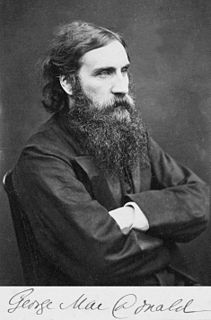 W
WThe so-called Kailyard school of Scottish fiction (1880–1914) dates from the last decades of the 19th century. It was first given the name in an article of April 1895 in the New Review by J.H.Millar, though its editor W.E. Henley was heavily implicated in the creation of the term. The criticism was that a certain group of Scottish authors offered an overly sentimental representation of rural life, but was potentially more a gripe against the popularity of the authors.. The name derives ultimately from the Scots "kailyaird" or "kailyard", which means a small cabbage patch or kitchen garden, usually adjacent to a cottage; but more immediately from Ian Maclaren's 1894 book Beside the Bonnie Brier Bush whose title alludes to the Jacobite song "There grows a bonnie brier bush in our Kailyard".
 W
WSir James Matthew Barrie, 1st Baronet, was a Scottish novelist and playwright, best remembered as the creator of Peter Pan. He was born and educated in Scotland and then moved to London, where he wrote a number of successful novels and plays. There he met the Llewelyn Davies boys, who inspired him to write about a baby boy who has magical adventures in Kensington Gardens, then to write Peter Pan, or The Boy Who Wouldn't Grow Up, a 1904 "fairy play" about an ageless boy and an ordinary girl named Wendy who have adventures in the fantasy setting of Neverland.
 W
WJohn Joy Bell, known professionally as J.J. Bell, was a journalist and author.
 W
WBeside the Bonnie Brier Bush is a book of short stories by Ian Maclaren's published in 1894. It became a hugely popular bestseller. It is considered to be part of the Kailyard School of Scottish literature. A kailyard or kailyaird (kale) is comparable to a cabbage patch and refers to a kitchen garden as might be found adjacent to a cottage. The title, Beside the Bonnie Brier Bush, references the Jacobite song "There grows a bonnie brier bush in our Kailyard". Publishers Weekly reported it as the bestselling novel in the U.S. during 1895 and the 10th bestselling novel during 1896.
 W
WSamuel Rutherford Crockett, who published under the name "S. R. Crockett", was a Scottish novelist.
 W
WGeorge MacDonald was a Scottish author, poet and Christian minister. He was a pioneering figure in the field of modern fantasy literature and the mentor of fellow writer Lewis Carroll. In addition to his fairy tales, MacDonald wrote several works of Christian theology, including several collections of sermons.
 W
WRev Dr John Watson DD, was a minister of the Free Church of Scotland. He is remembered as an author of fiction, known by his pen name Ian Maclaren.
 W
WSir William Robertson Nicoll CH LLD was a Scottish Free Church minister, journalist, editor, and man of letters.
 W
WAnnie Shepherd Swan, CBE was a Scottish journalist and fiction writer, who wrote mainly under her maiden name, but also as David Lyall and later Mrs Burnett Smith. As a writer of romantic fiction for women, she published over 200 novels, serials, stories and other fiction between 1878 and her death in 1943. She has been called "one of the most commercially successful popular novelists of the later nineteenth and early twentieth centuries". Swan was politically active during the First World War, as a suffragist, a Liberal activist, and a founder-member and vice-president of the Scottish National Party.